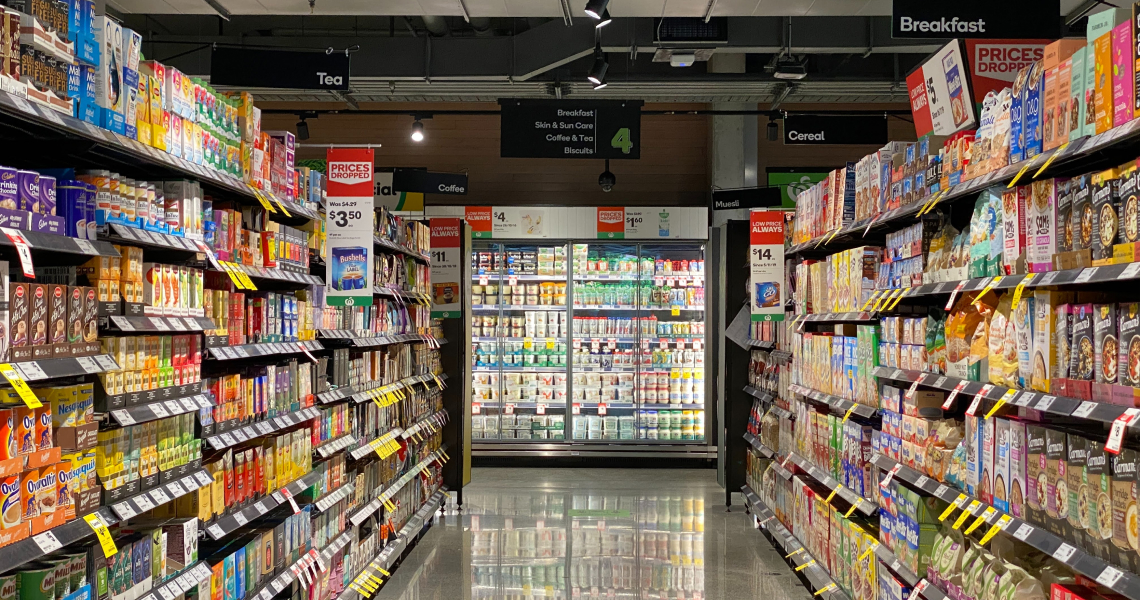Living In Uncertainty and Embracing Change
“Some people don’t like change, but you need to embrace change if the alternative is disaster.”
-Elon Musk
It would be fair to say that we live in an uncertain present: COVID-19, Russia’s invasion of Ukraine and the war that has followed, and now the nightmare that has unfolded in the Gaza strip and the horrifying prospect of a third world war–truly a recipe for financial instability in the not-so-distant future. The primary question any business must ask itself is, “Are we doing everything possible to secure our company’s future?”
During times of volatile and ever-changing economic landscapes, retail businesses face the constant challenge of maintaining profitability and staying competitive within their market. Uncertain economic times can amplify the pressure on retailers to optimize pricing strategies within their organizations, making it crucial for top management to consider investing into price management solutions.
In this article, we will explore how price management can help retailers navigate uncertain economic times with relative ease, and how these solutions contribute to positive changes in a company’s pricing strategy, create sustainable business growth, and facilitate market success for retailers of all sizes.
The Need for Pricing Flexibility
Economic uncertainties often lead to fluctuations in market demand, consumer purchasing power, and cost structures. As such, the need for retail businesses to adapt to rapid changes in market prices while suiting customer price perceptions becomes a critical race against time in order to remain relevant in the eyes of consumers. The inability to react quickly with a lucid, well-tested, and flexible pricing strategy can literally cost retail pricing managers their jobs, and even worse, can cost the CEO and company their entire business.
Retail organizations that embrace price management solutions gain the ability to quickly respond to changing conditions. They can adjust prices dynamically, taking into account factors such as competitor pricing, inventory levels, customer preferences, and even customer perception of prices. This flexibility ensures that retail chains remain agile and resilient, maximizing sales and profitability, all while remaining in full control of their overall strategy and the results that come with it.
To meet retail businesses’ need for pricing flexibility, price management solutions offer a vast array of tools that deliver the accuracy, control, and transparency pricing teams and top management require in order to stay ahead of uncertain economic conditions.
Understanding Modern Price Management Prowess
Price management encompasses a range of solutions and technologies designed to assist retailers in effectively managing their pricing strategy. The first models of pricing management built in the early 2000s were based on Excel or spreadsheet-style products that can be quite limiting compared to the more modern and technologically evolved ML/AI alternatives. Today’s solutions possess advanced algorithms, data analysis, and automation to provide valuable pricing insights, margin protection, and enhanced market competitiveness.
Streamlining and automating various pricing processes using advanced price management solutions allows retail businesses both small and large to adapt swiftly to market dynamics, consumer behavior, and economic fluctuations. The primary value to these efforts is that company leadership is reassured that their pricing managers are able to offer accurate and tested approaches to pricing, backed by reliable and actionable figures that are rendered by the pricing tool (no need for data analysts!). Top management is therefore empowered with full control over their pricing, with considerable simplicity and ease.
With the above premise in mind, let’s take a look at the specific functions and features that make price management solutions a critical retail business driver during times of financial and social change. In particular, ML/AI technologies allow price management solutions to provide reliable figures based on effective learned pricing strategies, processes, and behaviors.
The Role of ML/AI in Price Management Solutions
The integration of machine learning (ML) and artificial intelligence (AI) technologies has literally revolutionized the field of price management solutions. These advancements have further enhanced the capabilities and effectiveness of pricing strategies for retail businesses.
Let’s take a look at some key pricing techniques that ML/AI price management offers to its users.
Dynamic Pricing and Competitor Price Analysis
ML/AI enables dynamic pricing, which involves adjusting prices in real-time based on various factors like demand, competitor pricing, and inventory levels Dynamic pricing algorithms consider multiple variables and optimize prices at both the product and customer segment levels, ensuring that retail brands offer their most competitive prices while maximizing profitability.
When it comes to retail, it is wise to keep your friends close and your competitors closer. It should be no surprise then that competitor price analysis is an integral part of modern price management solutions that have ML/AI pricing-prowess.
Competitor price analysis achieves ten specific retail price management objectives:
- Make better-informed pricing decisions
- Achieve quicker market responsiveness
- Grow business through profit optimization
- Increase customer retention
- Improve market positioning
- Obtain reliable pricing trend guidance
- Stay ahead of competition with data-based pricing strategy development insights
- Perform considerable risk mitigation (especially in times of economic distress)
- Take specific action with pre-tested results via data-driven decision making
- Benefit global growth efforts through visibility into international markets
Competitor price analysis enables retail organizations to gain insight into market pricing standards so that they can maintain good customer price perception, without missing opportunities to raise prices when beneficial. They are also able to keep a close eye on their competitors’ prices, and acquire the data and knowledge to guide their pricing strategy, an absolutely invaluable pricing technique that helps execute well-reasoned pricing decisions and necessary changes.
The true value of dynamic pricing is the fast reaction to constantly changing and evolving retail price trends. Being quick to react to new market standards and promotional opportunities, in particular, lies at the core of an intelligent and readily adaptable pricing strategy. Dynamic pricing translates to having a pricing strategy that adapts weekly rather than quarterly–this faster and more effective reaction to changes on the market can be the difference between a business that stays competitive and relevant in the eyes of its consumers, or one that doesn’t and progressively loses market share and sales, possibly even leading to bankruptcy.
By applying dynamic pricing techniques to an overall strong pricing strategy, companies are empowered to stay ahead of market complications caused by unprecedented events.
Demand Forecasting and What-If Simulations
ML/AI algorithms can analyze vast amounts of historical sales data, market trends, and external factors to provide accurate demand forecasts. By leveraging these forecasts, retail organizations can optimize pricing decisions and inventory management. ML/AI models can identify patterns and seasonality in consumer purchasing behavior, enabling retail chains to anticipate changes in demand and adjust prices accordingly.
What-if simulations–as the name would suggest–allow users to create hypothetical scenarios to test and assess potential impacts of various pricing strategies and possible decisions pricing managers plan to take, before actually committing to any particular action. The cornerstone of modern ML/AI price management solutions, what-if simulations are critical in pricing strategy creation. Furthermore, retail businesses who have not adapted to this essential approach to pricing in the twenty-first century are at a major loss considering that many of their formidable competitors are armed with tools that help them not only predict price trends, but even dictate them.
Putting two and two together, demand forecasting can be projected through what-if simulations. New strategies and approaches can be tested based on an organization’s intent data and historical sales results, market trends, and all of the external factors involved. These forecasts are a great way to prevent poor pricing decisions, as well as deliver a tested hypothesis that is more likely to bring desired results.
Much of the other features and pricing techniques we will see in the rest of this article branch off from demand forecasting and what-if scenario analysis, an essential part of price management machinery.
Bulk Pricing, Promotions, and Performance Analysis
Bulk pricing is essential within retail. Shoppers are offered the ability to buy dozens of their favorite soft drinks and products in all of the different sizes and types available on the market for a reduced price, rather than buy individual items and pay a much higher premium for each.
It should be no shock then that the value of bulk pricing to retail businesses is literally huge. With bulk pricing, retail businesses are able to create tiers of discounted prices for customers buying products in larger quantities. The ML/AI behind this particular feature can set up pricing issue alerts as well as price optimization suggestions to ensure that retail shops are making the most of their profit margins.
Similarly, promotions can be monitored with alerts for pricing issues and improved price suggestions, all of which are dynamic and attached to market data. It is important to remember that promotions are a double-edged sword–they can either work very well in favor towards retail chains’ goals, or damage margins significantly. This is where the need for performance analysis comes in, to ensure that retailers are running effective promotions that don’t cannibalize sales, deter customers, reduce revenue, or eat profit margins.
Price Elasticity
A critical tool for regular pricing, bulk pricing, promotions, and performance enhancement, price elasticity helps businesses fully consider customer price sensitivity and trends within their behavior. Within the history of a business’s transactions, price management systems can find price elasticities and cross-elasticities based on purchasing behavior patterns through data modeling and statistics. With these patterns of data, there is an almost literal goldmine of figures available to price managers and the board of directors making executive decisions, which can really boost margins.
Competitive Pricing Intelligence: Pricing Zones and Brand Positioning
ML/AI-powered price management continuously monitors competitor pricing across various channels and locations. These technologies have the power to scrape data from e-commerce platforms, monitor online marketplaces, and analyze pricing trends.
Retail chains or businesses with more than one shop can have multiple competitors in some locations, and have none in others. Therefore, doing pricing and developing pricing strategy based on location is a logical choice. The pricing zones feature within ML/AI price management solutions helps users ensure that the prices they set for any given product are right throughout the assortment for all of their locations and channels. Hence pricing zones are a must-have tool when taking into account competitor pricing and how to respond in a way that benefits business and growth, especially during fickle economic circumstances.
Another crucial competitive pricing intelligence feature, brand positioning enables retail chains to compare their private brands and position them against their national brands, helping to create a sustainable brand hierarchy. Maintaining steady and regular sales of all SKUs at ideal prices is critical to a successful retail business, and brand positioning helps to achieve this objective. When it comes to retail pricing, it is not enough to simply have competitive intelligence on your competitors–it is also imperative within a shop’s SKUs, helping mitigate the battle of the brands so that each gets an ideal opportunity to sell and not cannibalize the sales of the other.
The type of pricing control offered within competitive pricing intelligence via pricing zones and brand positioning can salvage a business during times of financial instability.
Key Benefits–Results that Save Businesses
Margin and Profit Optimization
Price management solutions empower retailers to optimize profit margins by implementing dynamic pricing strategies used to stay on top of market trends. These solutions analyze factors such as cost structures, inventory levels, and market demand to determine the most optimal pricing for each product or category. By fine-tuning prices based on real-time data and predictive analytics, retail organizations can maximize margins while ensuring competitiveness. The margin optimization offered by today’s price management saves that extra three to five percent profit margin that can be a business-saver during periods of economic distress.
Efficient Promotions and Markdowns
During uncertain economic times, retail brands need to manage promotions and markdowns effectively to boost sales and clear excess inventory. Price management solutions enable retail pricing managers to plan and execute targeted promotions and markdowns based on historical data, customer segmentation, and price elasticity. This ensures that promotions are optimized to drive sales and profitability, reducing the risk of over-discounting, cannibalization of product sales, or missed opportunities to raise prices where it counts.
Data-Driven Insights
Price management solutions provide access to a wealth of data and analytics that enable informed decision-making. Through these insights, retail organizations can identify pricing trends, assess the impact of economic factors on consumer behavior, and make proactive adjustments to pricing strategies. This data-driven approach allows retail businesses to stay ahead of the curve, adapting quickly to economic fluctuations and consumer demands.
Competitive Advantages
In uncertain economic times, consumers become more price-sensitive and seek value for their money. Retailers that invest in pricing management solutions can analyze market trends, consumer behavior, and competitor pricing to identify strategic opportunities. By offering competitive prices without compromising profitability, retail chains can attract price-conscious shoppers and gain a competitive edge in the market.
Embracing Change with Price Management
In uncertain economic times, retail businesses face increased pressure to optimize pricing strategies and maintain profitability. Investing in price management solutions empowers retail brands to navigate economic uncertainties with confidence. Most importantly, it can be the key to success in their market. By applying dynamic pricing capabilities, optimizing margins, executing efficient promotions, and weaponizing data-driven insights, retail chains are armed to position themselves for success in their market, amidst challenging economic landscapes.
Embracing price management solutions is not only a strategic investment but a proactive step toward long-term sustainability and growth in the retail industry–never has the need for adapting to change with true pricing competence been more necessary.




